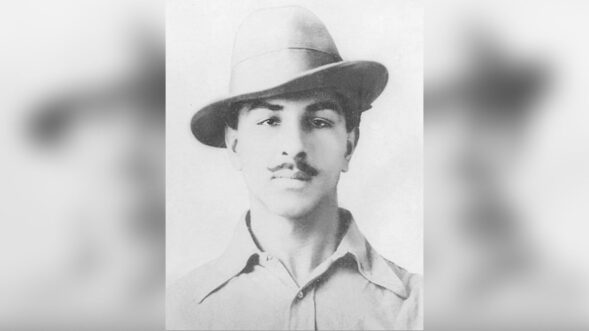
In his poem, Understanding, the Shillong-based poet, Robin S. Ngangnom wrote,
in an age whose only metaphysical worry is,
“what can be saved?”,
Trees, animals, or children, for instance,
Late after the mocking, “ecstatic destruction”.
Indeed, this question – ‘what can be saved?’ – looms large in the minds of the residents of Shillong. The older generation laments the gradual erosion of values, while the youth march with the changing times – undoubtedly, a void exists.
Amidst this delicate imbalance between noise and introspection, comes a tri-lingual magazine titled, Ka Jingshai, published by the Ramakrishna Mission Vivekananda Cultural Centre (RKMVCC), Shillong. Translated, it means, “The Light”.
Scholarly articles in Khasi, English and Hindi, interspersed with beautiful artworks from diverse artists make this an intriguing project. So far, seven issues have been published.
Swami Aryeshananda, a monk of the order who gave pragmatic shape to the magazine, said, “Ka Jingshai was envisioned to be a platform where ideas meet each other – the indigenous brilliance of Meghalaya embracing national ideals and finding a connection with the global world. Hence, we, as a team, conceived Khasi, Hindi and English to be the carriers of our message.”
Gone are the times when people would passionately discuss about books they have read. In this scenario, is publication counter-productive?
The monk said, “In our experience, we have seen that serious readers still prefer to hold a physical copy in their hands. This feeling cannot be emulated in the digital platform. At the same time, there is no denying that the world is constantly braving digital frontiers. What we now seek is at our fingertips. Keeping this in mind, we also have the e-zine version.”
Ambitious beginnings
Right from the very first issue published in Spring 2020, the vision was big.
The team published Khasi articles on Ramakrishna Paramhansa and his consort, Saradamani Devi and Swami Vivekananda; Ka Sakhi Jong Ka Jingkieng Ksiar (“Proof of the Golden Bridge”) by the veteran journalist and writer, (L) Sumar Sing Sawian; Halor U Lum Diengeiei by Silbi Passah; and a Khasi poem, Ka Khuri by P.S. Lyngdoh, a translation of The Cup by Swami Vivekananda.
The Hindi section covered articles by Anita Panda and the (L) Bikram Vir Thapa. Poems by Ananya S. Guha and Robin S. Ngagom captured the poetic essence of the hills.
Celebrated author Bijoya Sawian wrote about the legacy of U Babu Jeebon Roy and U Radhon Singh Berry Kharwanlang; Moushumi Dey penned a beautiful tribute to legendary Khasi folk singer, (L) Kerios Wahlang; Desmond L. Kharmawphlang wrote an article titled, Culture and Social Values; and Esther Syiem wrote, Aspects of Orality in Literatures from Northeast India.
Accompanying these pieces were illustrations and artworks by Banteilang Hynniewta, Teisuklang Chyne and Raphael Warjri. The comic strip by (L) Dougel Henpilen added a dose of humour.
Ka Jingshai aimed to reach out to the youth through the section “Youth Speak”.
Lavinia Chyne in her poem, Wakefulness, transported readers to the urban realities of life. This section has seen an enthusiastic response from the young minds of the city.
Careful Curation
“Chiaroscuro” (a term used in visual arts) included beautiful artworks and photographs by Benedict S. Hynniewta and Skhemlang Hynniewta – in the subsequent issues, this section became bigger, featuring artists, Seema Kohli, Reiko Shimizu, Lalremruata Varte, Florence Lohu, Akangsha Chakraborty, Shayan Nath and Anurag Banerjee, to name a few.
Among the new writers in the second issue were Dalariti G. Kharnaior (Ki Sur Myllung Ka Jamlu), Streamlet Dkhar (Lineage System in Khasi Matrilineal Society: Tradition and Culture), Ibabet Hynniewta {The Leech (A Khasi Folktale), accompanied by comic strip by the late Dougel Henpilen}, and Raphael Warjri (Sngi: A Mystic of Enlightenment).
Recalling this issue, Swami Aryeshananda said, “While all the issues are dear to us, I personally feel the second issue stands out. There is a distinct leap from the first issue – we learnt a lot from our mistakes.”
Ka Jingshai experimented with its overall appearance post-launch – the front and back cover design is a labour of love.
The Spring 2021 issue featured Kitbor W. Nongrum, Michael Buam and the (L) Sumar Sing Sawian; they wrote in the Khasi-Pnar language.
The section, “Larger than Life” included the Khasi folktale, How the Dog came to live with Man. The text was taken from the book by K.U. Rafy; Bhogtoram Mawroh illustrated the piece.
This issue carried Hindi poems by Esterson Sohtun, Pankaj Mishra ‘Atal’ and Madhukar Deshmukh, along with scholarly pieces on U Kiang Nangbah by Alok Singh and women empowerment by Ujjwala Desai. Short stories by Annapurna Vajpayee and Nita Sharma added another dimension to this section.
Gracing the English section were two celebrated authors Mitra Phukan and Bijoya Sawian. They wrote about the music of the Brahmaputra Valley and Khasi philosophy through dance, music and poetry, respectively.
The recent issue (Volume 4, Issue 1) published in Spring 2023 featured writings (in Khasi) by P.S. Lyngdoh, Streamlet Dkhar, Chosterfield Khongwir, Silbi Passah and Peacefully Kharkongor. The English section had contributions from Donboklang Majaw, Champa Sen Choudhury, and Tayenjam Bijoykumar. The ‘Obituary’ section covered the legacies of the (L) Sumar Sing Sawian and B.B. Dutta.
An international perspective
Almost every issue gave space to scholarly articles from the West.
Take, for instance, Ka Jingshai’s section “Across the Boundaries” in its debut issue. Dianne Marshall chronicled the friendship between Swami Vivekananda and the classically trained singer and concert soloist, Emma Cecilia Thursby, in her piece, Music and Mynah in Gramercy Park. It offered a rare glimpse of the monk’s life.
Other international contributors included Karl WhitMarsh (A Vedantist View of Ireland) who chronicled the history and evolution of Catholicism and the global lockdown in the country in 2020; Jeffrey D. Long who wrote an introspective piece on the future of humanity; and an interview of Ruth Harris on her book, Guru to the World: The Life and Legacy of Vivekananda (2022), which examined his impact on “the western understanding of spirituality and the global perspective as a whole”.
Special mention must be made of the short story, Ramakrishna Reborn? A Fantasy by William Page.
This piece re-placed the prophecy surrounding the reincarnation of the 19th century reformer – Ramakrishna Paramhansa himself said this in 1885 – and imagined his rebirth in Finland as Anni Makinen, a little girl who speaks fluent Bengali, aged two, in the year 2090.
Reading this futuristic piece will make curious readers wonder about the author. Page was born in Massachusetts in 1938, and has been closely associated with the Vedanta tradition.
Anecdotes:
Bonds that last
Ananya Roy, an educator associated with RKMVCC, is on the advisory board of Ka Jingshai.
In sharing anecdotes, she said, “We deal with creative people. The authors and artists have their own unique approaches in dealing with the chaos and fun that is part of publishing an issue.”
Individual quirks remain. “We reached out to an eminent author for an article. Interestingly, it would be typed by a family member and a printout would be given to us. Considering it was typed in the computer, we asked for a soft copy. Somehow this was difficult for the author. We would re-type the printed copy after unsuccessful attempts to contact the typist,” she reminisced.
Roy lamented the demise of (L) Sumar Sing Sawian, adding he was a father-figure for the Khasi section and the entire team. “A similar situation happened here. He, too, would type his articles on a typewriter although there was a computer in his room. He preferred the former.”
Sometimes, the artists could not meet deadlines. “We would discuss going ahead without their art. At that moment, we would find beautiful works that would be incorporated.”
Amused, the educator emphasised how these memorable moments led to bonds that continue to grow with each issue.
The way ahead
Referring to the first issue, Roy shared, “The global lockdown was a period of social distancing, hand sanitisers, gloves and masks. All the members came together to inaugurate the first issue. I don’t think we were sure of its continued journey then.”
The journey of Ka Jingshai, with its delightful twists and turns, is a river of ideas, both spiritual and secular.
Rooted in the understanding that the past informs the present and shapes the future, the magazine continues to carve its place.
This is summed up in the words of Swami Aryeshananda, “We see Ka Jingshai unfurl into something that connects the good, culture-loving people together and spread cultural awareness among the masses of Meghalaya and the global world. It should become a platform for dialogue, promoting the innate pluralism and harmony among different communities of the city and the world.”






